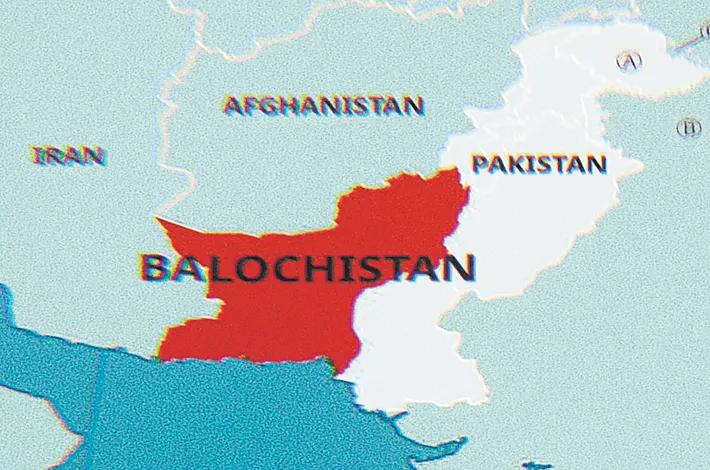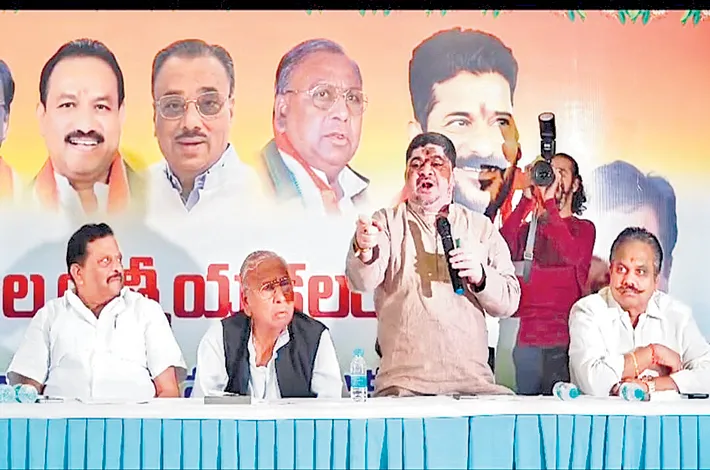Ceasefire with Pakistan: Has India squandered a chance?
12-05-2025 12:00:00 AM

- 2025 could have been our moment!
- Potential to liberate regions like Balochistan, and Pashtun-dominated areas lost
On May 10, 2025, US President Donald Trump announced a “full and immediate ceasefire” between India and Pakistan, mediated by the United States, following days of intense cross-border hostilities. The announcement, made via Trump’s Truth Social platform, was initially met with cautious optimism in some quarters, but it has sparked widespread disappointment across India, Balochistan, Afghanistan, Sindh, and among Pashtun communities.
Many, particularly supporters of Indian Prime Minister Narendra Modi, saw the escalating conflict as a historic opportunity to decisively weaken Pakistan and potentially liberate regions like Balochistan, Gilgit-Baltistan, and Pashtun-dominated areas. The ceasefire, perceived as a concession to US pressure, has led to comparisons with former Prime Minister Indira Gandhi’s bold leadership in 1971, when her government’s military intervention led to the creation of Bangladesh. Social media platforms, especially X, are abuzz with voices expressing frustration, nostalgia, and a sense of a squandered moment.
A nation divided on the ceasefire
For us, the ceasefire has ignited a firestorm of debate. Supporters of PM Modi, who have long admired his strong stance on national security, expressed dismay that India did not press its military advantage. The conflict, sparked by a terrorist attack in Pahalgam, Jammu and Kashmir, on April 22, 2025, which killed 26 civilians, had seen India launch “Operation Sindoor,” targeting terrorist infrastructure in Pakistan and Pakistan-occupied Kashmir. The operation, which destroyed nine terror camps, was hailed as a bold move, and many believed it could have been a precursor to a larger strategic victory.
On X, a user with the handle @BharatFirst2025
posted, “Operation Sindoor showed Pakistan we mean business. Why stop now? This was our chance to finish what we started and free oppressed regions. Modi ji, don’t bow to US pressure!” The sentiment reflects a broader frustration among nationalist circles, who saw the conflict as an opportunity to dismantle Pakistan’s influence in the region. Another user,
@JaiHindVivek
wrote, “Indira Gandhi didn’t wait for anyone’s permission in 1971. She created Bangladesh. Today, we had a chance to liberate Balochistan and Gilgit, but we chose talks. Disappointed.”
The nostalgia for Indira Gandhi’s decisive leadership in the 1971 war, which led to Pakistan’s division, is palpable. Social media posts frequently invoke her legacy, with users sharing images of her alongside captions like, “When India had a leader who didn’t blink.” A post by
@HistoryBharat
read, “Crores remember Indira ji today for her courage. 1971 was a masterstroke. 2025 could have been our moment, but we settled for a ceasefire.” These sentiments underscore a belief that India, under Modi’s leadership, missed a rare chance to reshape the region’s geopolitics.
Balochistan: Hopes of liberation dashed
In Balochistan, a region long plagued by separatist movements and allegations of Pakistani state oppression, the ceasefire has been met with profound disappointment. Baloch activists and diaspora communities had hoped India’s military actions would signal support for their struggle for independence. The destruction of Pakistani air bases during Operation Sindoor had raised hopes that India might back their cause more overtly.
A Baloch activist, @FreeBalochVoice, posted on X, “For once, we thought India would stand with us. Operation Sindoor gave us hope that Pakistan’s grip would weaken. But this ceasefire feels like a betrayal. Balochistan deserves freedom.” Another user, @BalochDreams, echoed this sentiment: “Indira Gandhi helped create Bangladesh. We dreamed Modi would help Balochistan. Why did India stop?” These posts reflect a sense of abandonment among Baloch communities, who see the ceasefire as a lost opportunity to challenge Pakistan’s control.
Afghanistan and Pashtun Communities: A Sense of Déjà Vu
In Afghanistan, where memories of Pakistan’s alleged support for terrorism remain raw, the ceasefire has stirred frustration. Many Afghans, particularly Pashtuns, who share ethnic ties with communities in Pakistan’s northwest, had hoped India’s actions would weaken Pakistan’s influence in the region. Pashtun activists, advocating for greater autonomy or unification of Pashtun lands, saw India’s military escalation as a potential catalyst.
An Afghan user, @PashtunUnity, posted, “India’s strikes gave us hope that Pakistan’s hold on Pashtun lands could be challenged. But this ceasefire, pushed by Trump, feels like another compromise. We need bold leaders like Indira Gandhi.” Another user, @KabulVoice, wrote, “In 1971, India stood up to Pakistan and changed history. Today, we hoped for the same, but talks won over action.” These reactions highlight a shared disappointment among Afghans and Pashtuns, who feel the ceasefire prioritizes diplomacy over justice.
Sindh: Yearning for change
In Pakistan’s Sindh province, where nationalist movements have long sought greater autonomy, the ceasefire has similarly dampened spirits. Sindhi activists, who accuse Pakistan of exploiting their region’s resources while marginalizing its people, had viewed India’s military actions as a potential disruptor of the status quo. A user,
@SindhAwakens, posted, “We thought India’s strength would shake Pakistan’s foundations. This ceasefire is a step back. Sindh deserves better.” Another,
@VoiceOfSindh, wrote, “Indira Gandhi’s 1971 war gave hope to oppressed regions. We needed that spirit in 2025, but India chose peace over justice.”
The US Role and Trump’s influence
The ceasefire’s announcement by President Trump, who claimed credit for brokering the deal, has added to the discontent. Many in India and the region view the US intervention as an imposition that curtailed India’s strategic autonomy.








